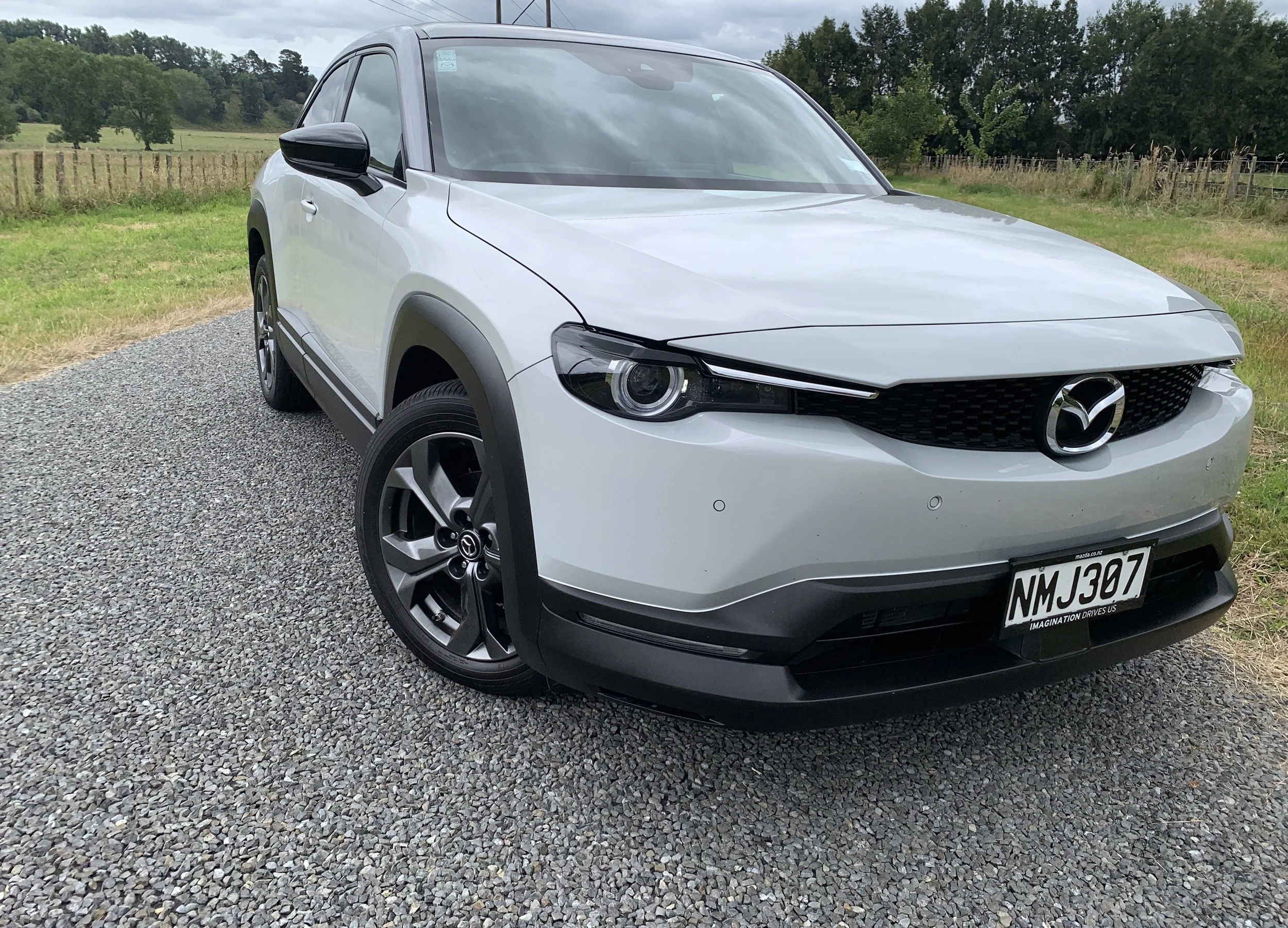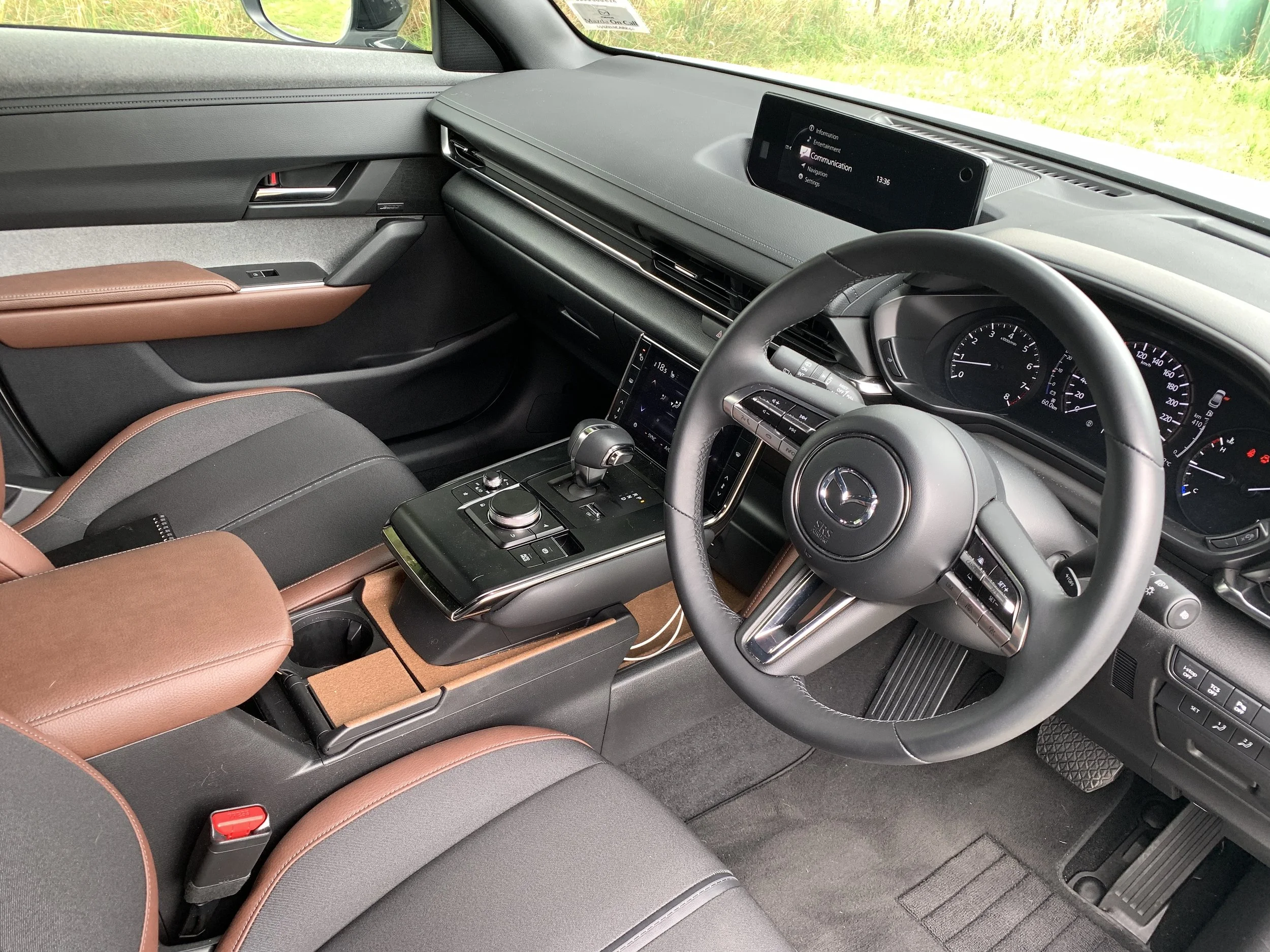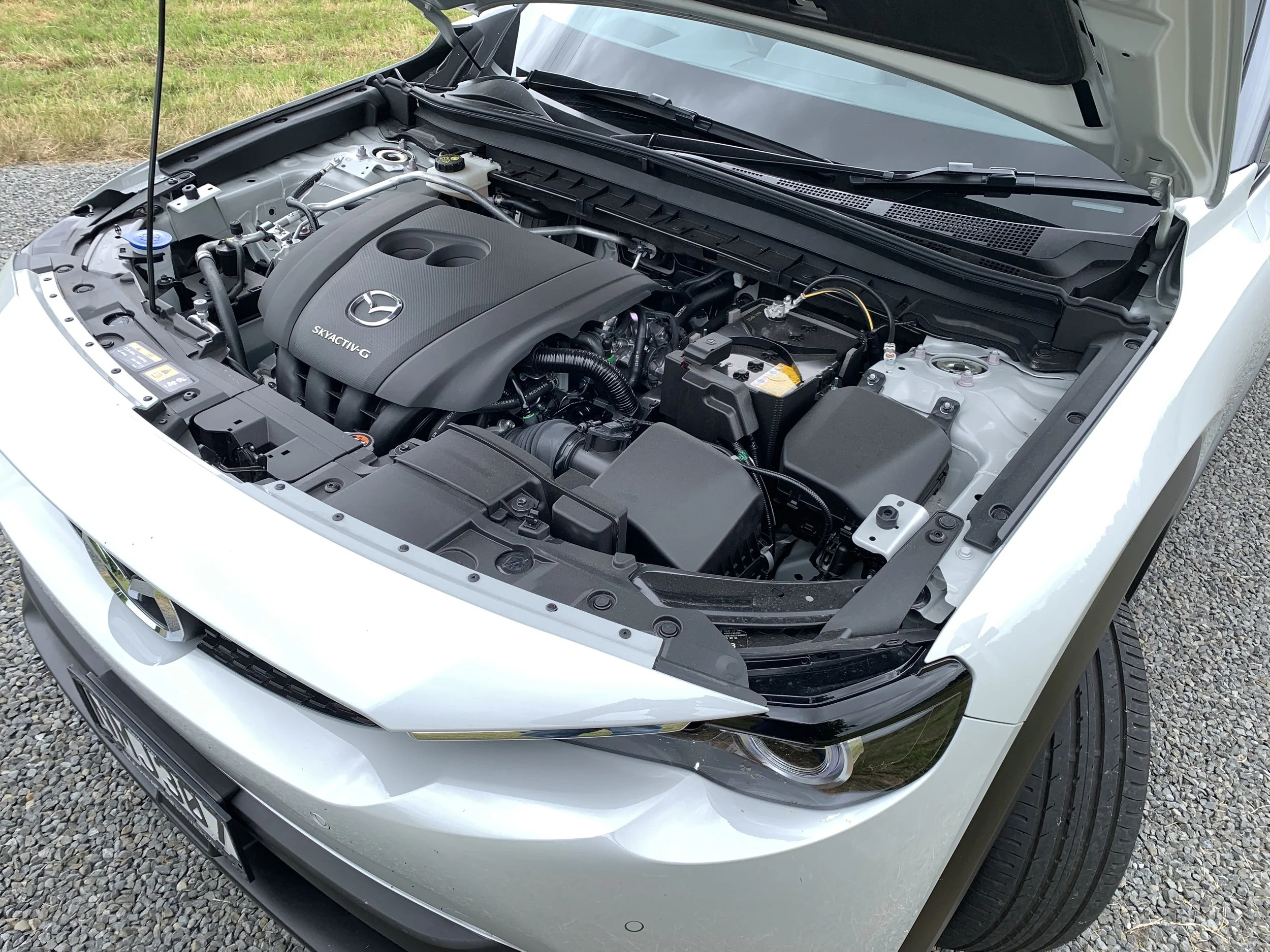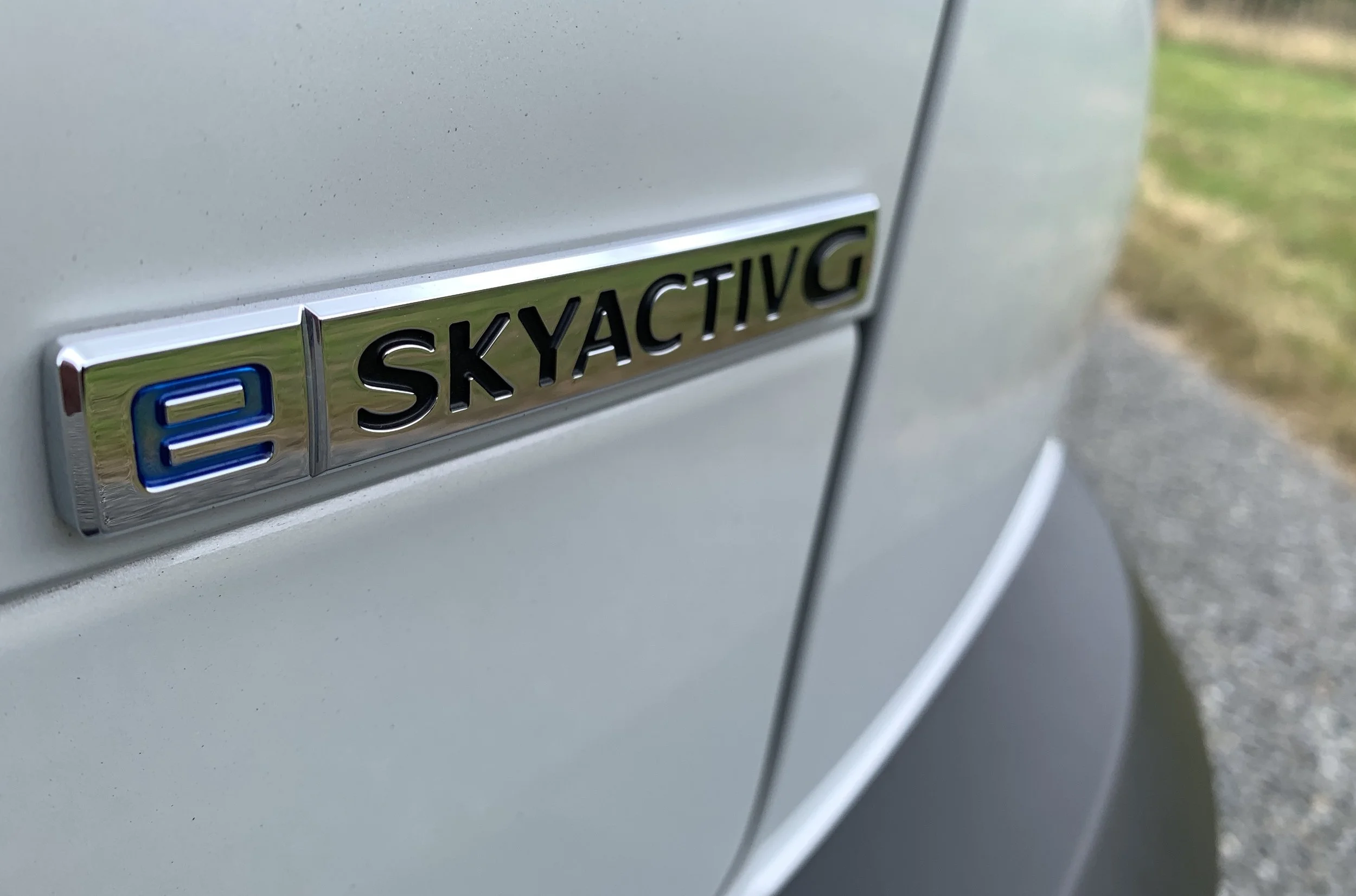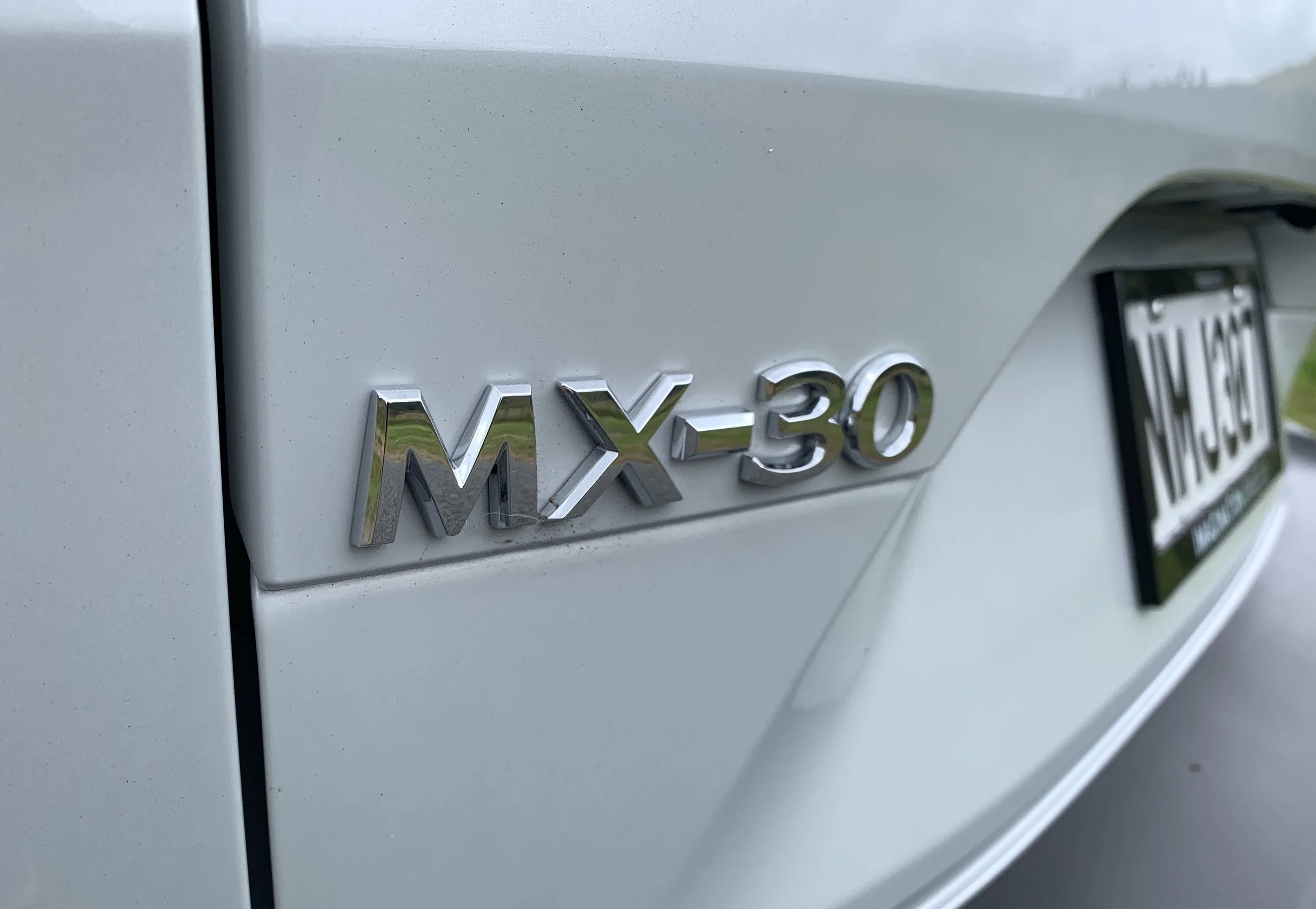Mazda MX-30 M-Hybrid review: No plug for this play
/How does Hiroshima’s first production electric fare in a slightly ohm-energised petrol format?
Price: $46,790.
Powertrain: 2.0-litre four-cylinder petrol with 24V mild hybrid system, 114kW, 200Nm, six-speed automatic.
Vital statistics: 4395mm long, 1555mm high, 1795mm wide, 2655mm wheelbase. Luggage space 341-1146 litres. 18-inch alloy wheels.
Like: Refined powertrain, stand out styling, no range issues.
Don’t like: Never has independent electric impetus, doesn’t match SkyActiv-X thrift, rear seating compromises.
TAKE a petrol car, replace the oily bits with electric drive: That’s not an uncommon thing these days, just as prevalent as developing an EV from scratch.
But apart from the occasional Stateside bonehead who revels in slapping a V8 into a Tesla, who’d dare head in the alternate direction, and swap out the battery for a petrol? No actual car maker would be so daft, right?
You might be excused for imagining that’s what’s gone on with the MX-30 in its M-Hybrid format. This version has turned up to place alongside the fully battery-compelled version, to feed off the fossil fuel we’re expected to one day bid sayonara to.
Mazda never made any secret about its intent for a twin with what some ideologists would call an evil heart; a 2.0-litre petrol engine.
Any surprise element comes down to timing. In some places, the sister ships landed together. In others, the one with the combustion engine preceded the EV. In NZ, the reverse has occurred.
Now they’re together in the showroom, you can see the petrol one also has a Green tinge, in that it’s a hybrid, though admittedly Hiroshima’s idea of a petrol-electric is not in tune with the kind Japan’s biggest brand delivers to Kiwis.
Mazda’s totally differs in design and intent to Toyota’s. It never has enough electric oomph to ever run on electricity alone, not even for silent step off. That it’s always drinking fuel might warrant some thinking about.
Hybrid in Hiroshima-speak means using a small Integrated Starter Generator (ISG), which captures energy that would usually be wasted during braking. The system captures and then stores that energy to power the vehicle's electrical systems, in theory reducing the load on the system and saving fuel in the process. It can, under ideal situations, also power the car's electrical systems. Just never the car itself. When the MX-30 fires up, it does so quite literally. Fuel ignites, cylinders churn and so on.
It's an interesting new development from a brand with interesting thoughts about how the scene is going to evolve over the next decade or so. Though patently not indifferent to an electric future unfolding, it is among legacy carmakers with belief that global transition is going to take a lot longer than those early adopters of Nissan Leafs and Teslas would have us believe. It holds that there will be a coexistence between internal combustion engines and electric drive systems for a certain period, perhaps until 2050, for all sorts of reasons, including acceptance that electric also means ‘electrified’.
You could call this hybrid Mazda’s third choice because, in addition to the electric, it also has a clever lean-burn petrol engine under the SkyActiv-X mantle. Two out of three use fuel, one doesn’t need it.
Sorting out which is best isn’t the point of this test, but gut feeling is that it really comes down to how and where you tend to drive and how much you want to spend.
On simple outlay alone, the hybrid is the cheapest pathway to parsimony, in that it presents a $5205 to $8200 saving over the two SkyActiv-X cars Mazda NZ offers, a Mazda3 hatch and a CX-30 crossover (which present in a Takami trim that’s more affluent than the Limited spec the MX-30 tops out in). An MX-30 with hybrid is also almost half the price as the electric MX-30, which even when achieving Government’s Clean Car rebate is a $66,365 ask (and $74,990 at RRP).
The latter difference in spend is most sobering. As much as electric is better for the planet, when you’re buying the same look and same equipment, but for $19,575 to $28,200 less, how can the Hybrid not be seem as the smarter hit on your pocket? In respect to running costs, even the smaller amount would require years and many thousands of kilometres’ driving to offset by going electric.
Of course, that line of logic only works if you’re utterly sold on the MX-30 to start with. In a way, that’s a much bigger decision.
Let’s face it; in respect to the design approach, it’s surely incontrovertible to say that this car stands as the greatest curiosity out of all the product Mazda currently puts in the showroom.
The out-there styling is fed by good logic when you’re talking the full-blown electric. When you’re chasing trendy urbanites with Green dollars to spend, nothing empowers more than a highly visible non-conformist look. Features like the three-tone exterior colour scheme, cylindrical LED headlights and those freestyle doors deliver on that. For sure, what’s charismatic and characterful to some will seem a bit crap to others, but at least it gets noticed. Also, though it looks different to every other Mazda, the DNA strands aren’t stretched to snapping point.
On that side of things, though, if a competition was to decide what cars should be EVs simply by virtue of their look … well, it’d be in with more than a fair chance of winning. Several friends who imagined I has having another steer of the electric model only became convinced otherwise when I first showed them the fuel filler then fired the car up.
The cabin’s healthy use of natural, recycled and vegan materials probably also serves to confuse, in that these are always go-to ‘woke’ ingredients in EV circles. Putting them in a petrol as well might run risk of discord with the ethically-minded, though the cork has genuine historic cred anyway and the hard-wearing look and feel of seat coverings rendered from recycled fizzy drink bottles makes good argument for all cars going this way.
Still, spending more time with it reminds why some criticism will stick. Mostly it’s in respect to the utility aspect. Despite being a sizeable car, it really is only a roomy one up front. The rear seat is cramped, in head and legroom, for adults. Regardless of the wide-opening nature of the side door design, it’s not easy to access and the area is a little claustrophobic thanks to the small side windows. Room behind the rear seats isn't exactly generous, either. Any Bunnings’ adventure will very likely require folding the rear seats flat.
Front seat occupants don’t feel any such angst; the part of the cabin forward of where the B-pillar would be (if it had one) is very much business class; light an airy and with bags of room.
The driving environment, at least, is here is otherwise as functionally slick as it is good looking, with no great alteration save to some of the dials being altered to better suit the drivetrain’s operation.
The only issue that driving the M-Hybrid gave opportunity to bleat about again is the awkwardness of the sole USB port being in the worst conceivable location; virtually at floor level in the hollow behind the floating centre console. You’re forced to use it if running Apple CarPlay or Android Auto. But otherwise it’s pretty solid ergonomically. Everything’s as per the EV, the mix of modern screens and more traditional dials is good and the driving position is great.
About the driving. Mazda’s valid arguments about why this car in its EV format only needs a small battery (because, mainly, most people never drive far and, by the way, it’s basically designed to shine brightest in urban driving) has pretty much been ignored by everyone, judging by how much noise has been made about how blighted it by ‘only’ delivering 224kms’ range out of a charge.
Let the record show that the phrase ‘range anxiety’ will never be heard in respect to the M-Hybrid. The trip computer’s indication on pick up with a full tank predicted a range of close to 500kms didn’t play as daft optimism. Putting 340kms’ on the clock reduced the tank capacity by just over 50 percent but range was still above 300km.
The economy from a mix of urban and open road running hovered in the low to mid-sevens, the overall average finally settling at 7.2L/100kms for the entire period.
That’s fair, but not as impressive as the efficiency I eked from the Mazda3 SkyActiv-X last year, which shone brightest on a long-haul run, with an overall 6.4 litres per 100kmh – coincidentally the combined cycle optimal claimed for the MX-30 Hybrid. The differences don’t stop there. From the evidence delivered by its onboard computer, SkyActiv-X can, at times, lean out incredibly – down to under 2 litres per 100km. The M-Hybrid doesn’t do that. Not even close.
In effect it means that the system employed by Mazda also won't be as efficient in fuel-usage terms in the real world as the system that Toyota uses, either. The CH-R Hybrid that stands as the most obvious external challenger delivered close to its 4.3L/100km optimal when tested by Rob Maetzig last year.
Some of the difference potentially comes down to the Mazda having a 20kW higher power output than the Toyota; it certainly feels a more muscular engine and that it operates through a six-speed automatic rather than a CVT. Also, too, there’s the weight to consider. At 1492kg, the Mazda is a heavier choice, though on that aspect the Hybrid appears to be around 200kg lighter than the electric.
With the Hybrid as with the EV edition, the kilo count seems less important that the weight dispersion.
One of the pleasant surprises arriving with driving the battery model was discovering that, despite the limited range (and Mazda’s own views) leaving it set to be categorised as a city-first car, it’s actually a pretty decent open road drive.
Not just on easy-going main roads but even on secondary ones. The chassis tuning really impressed. Easy, accurate steering and a cheery confidence to its cornering … yeah, it was a surprisingly fun car.
The Hybrid also has a confident driving demeanour yet, at same token, the feel is different, mostly in respect to its balance and the ride.
It’s easy to understand why the EV is the cushier car; not only is it hauling more kgs, but the single heaviest item, the battery, is low and amidships, under the floor and within the wheelbase.
It’s not the same with the Hybrid. Here the biggest contributor to the overall kilo count is the engine, sitting higher and way forward, basically above the front wheels.
You can straight away feel the difference in demeanour; the ride is less fluent and the car it more nose-led. It’s not bad, but it is much more akin to the regular hatchback feel.
In addition to that, there’s an unavoidable change in refinement. The EV is the more successful exemplar of this brand’s ethos of ‘accessible premium’. It’s quiet and insulated, with road noise detectable at speed on coarse-chip surfaces only. In general operation, the Hybrid is also very refined and smooth, but of course it has an actual engine note – because it has an actual engine. The greater intensity of road noise also reminds just what an effective sound barrier results from having a heap of lithium ion batteries under the floor.
When pushed, the petrol potentially is the better to listen to - EV shrillness under load is an acquired taste – and, though it’s not as immediately urgent as the electric, it has a more natural throttle feel. The gearbox is smooth at just about any speed, too, and isn’t rattled when you’re on and off the throttle constantly. Though there is a sport function that livens things up, the environmental credential perhaps keeps it from feeling too risqué and also likely explains why the auto start/stop kills the engine every time you look like stopping for a moment.
It’s all in all an interesting concoct. In terms of technology imprint, it’s taking a back seat to the electric and doesn’t seem to be as efficient as the market-dominant brand’s hybrids or the SkyActiv-X approach. On the other hand, it’s a friendly slide-in-and-go with a clear cost advantage at time of initial spend.
Hybrid drivetrains are clearly raising interest in this market and you don’t need reminding which brand is most enjoying the benefit. M-Hybrid will at least reinforce that there are other choices. If you don’t feel comfortable with how it delivers in the MX-30, the same drivetrain now implants in the CX-30 – same platform, but a more orthodox body shape – for a slightly lower price again.

